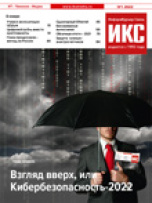| Рубрикатор |  |
 |
| Все новости |  |
World News |  |
 |
Latin America to get its first LTE network this year
| 18 февраля 2011 |
Mobile data ARPUs are on the up in Latin America but operators are struggling to serve their customers because they don't have access to the spectrum they need, according to industry body 4G Americas. However, there are encouraging signs: the continent is on the verge of welcoming its first commercial LTE network.
“We might see the first LTE network in the region by the end of this year,” Erasmo Rojas, director of Latin America and the Caribbean for 4G Americas told Total Telecom on Thursday. Colombia auctioned off spectrum in the 2.6-GHz band in mid-2010 and rollout requirements state the winners have to launch services using the spectrum within a year, he explained.
There have been LTE trials in other markets, including Chile, Argentina, Brazil, Peru and Mexico, Rojas added, but noted that in many cases the operators were forced to run the trials in their existing spectrum bands, because “the governments have not released new spectrum”.
The availability of spectrum is a problem for operators throughout the region. Demand for mobile data is growing and operators need to capitalise on that revenue stream in order to offset falling voice ARPUs, but regulatory bodies still have a very voice-centric mindset and allocate spectrum based on the requirements of voice services, rather than data, Rojas said.
“The voice time is gone,” he said. New devices like the iPhone and iPad, plus a young population keen to access social networking and download music and video content, are driving data growth.
“Operators are telling regulators: 'we can't cope with that demand',” without new spectrum, he said.
Argentina is Latin America's most advanced data market, with data (including SMS) contributing 36% of revenues as of Q3 2010, Rojas said. Venezuela follows with a 33% data contribution, Ecuador and Mexico both 24%, Colombia and Chile at 17%, and Brazil and Peru at 15%. And even the size of the contribution from SMS is changing. One or two years ago SMS accounted for 80% of data ARPUs. “Today it's only about 60%,” falling to 50% in some markets, Rojas said.
“This is an argument the incumbents are showing to the governments,” Rojas said. However, the regulators remain sceptical about the demand for mobile data.
Increasing data revenues is no easy task for operators in markets where much of the population has low spending power and 80% of mobile customers use prepaid services.
The operators have tried to migrate prepaid users to contracts, but most did not see the value, Rojas said. So instead they are boosting their service offerings for the prepaid sector, rather than – as they did previously – reserving mobile broadband services and the like for the post-paid market.
Ultimately though, lower-priced devices will be key to attracting Latin America's more price-sensitive users to mobile data offerings.
Источник: Total Telecom
Читайте также:
Опубликован перечень поручений по итогам заседания Совета по стратегическому развитию и нацпроектам
Решения N3COM прошли тестирование на сети LTE ОАО «РЖД»
МТС начинает отключать старые сети 3G
билайн завершил масштабную модернизацию сети в Московской области
МегаФон импортозаместил связь для экстренных служб и бизнеса

















Оставить свой комментарий:
Комментарии по материалу
Данный материал еще не комментировался.